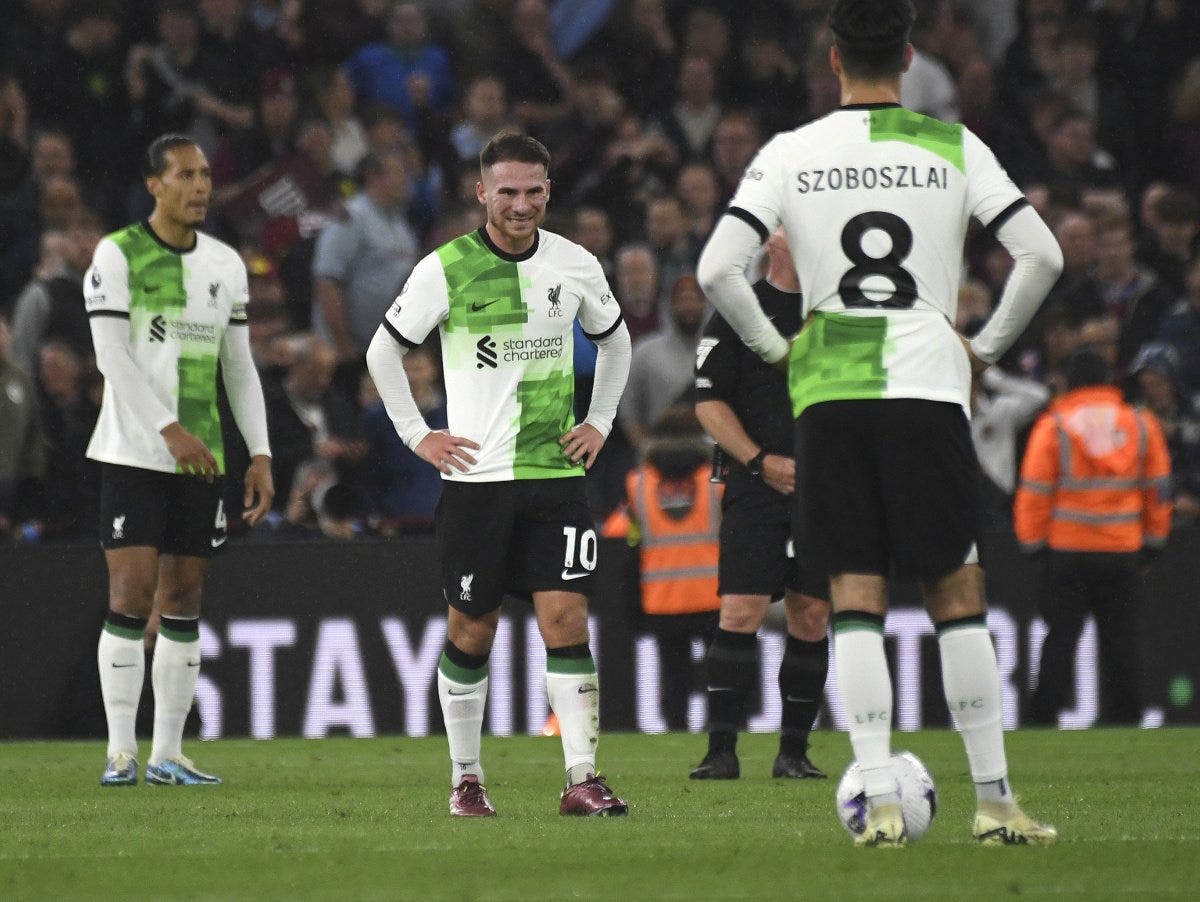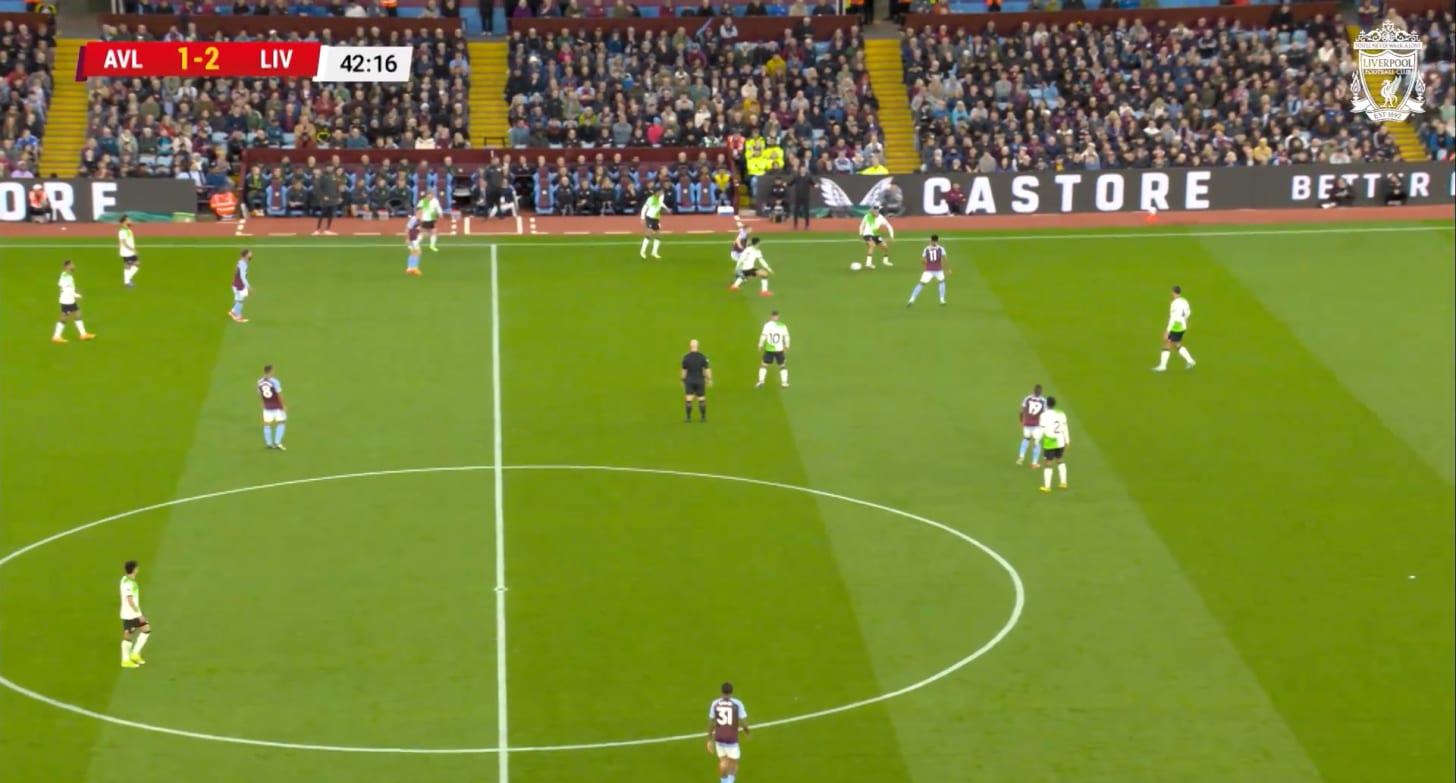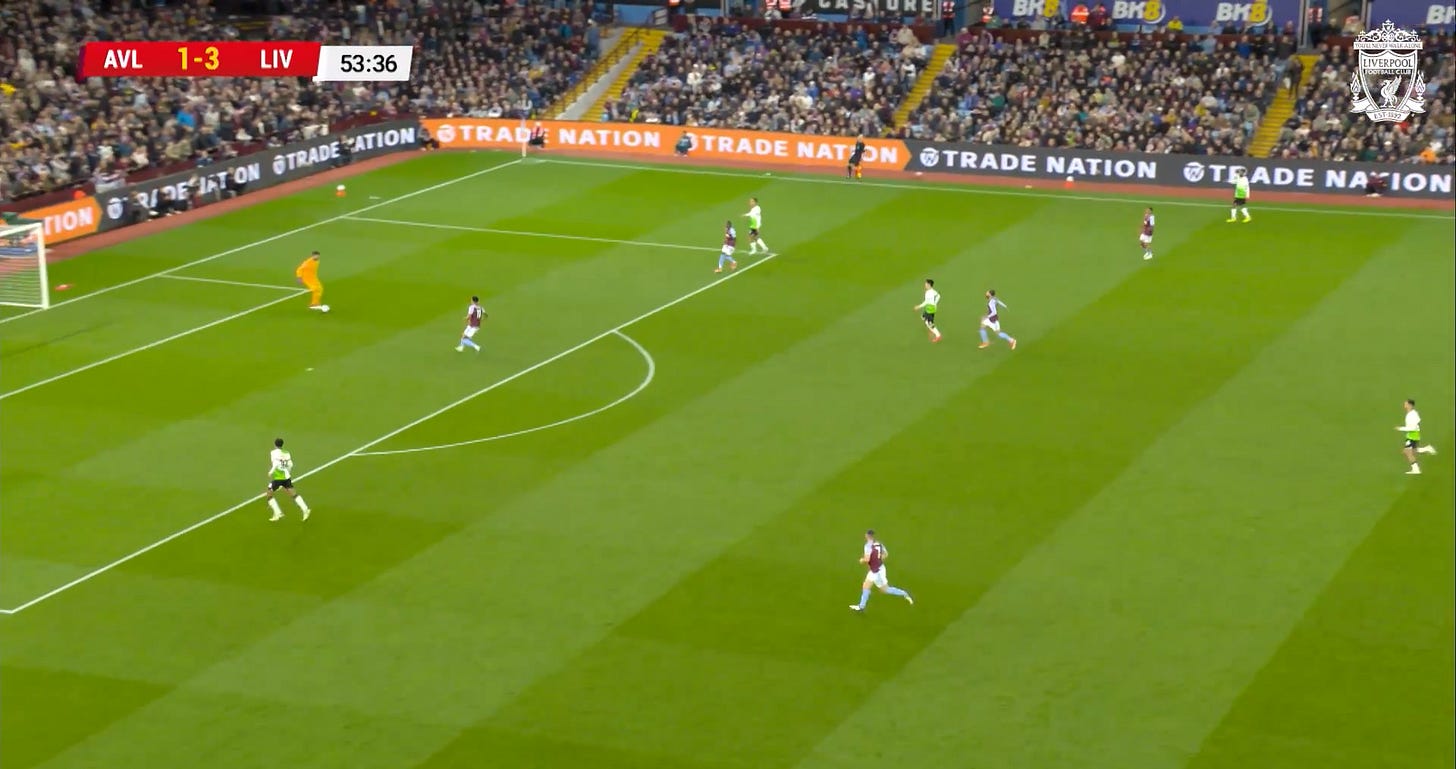Stat of the Match: Aston Villa 3-3 Liverpool
The Comedy of Errors
Liverpool played a strange game at Villa Park on Monday evening, in more ways than one. The outcome made no real difference to their season while being of huge importance to Aston Villa.
As such, it was a unique match among the 491 Reds games on Jürgen Klopp’s CV. His side had games of this nature after sealing the title in 2019/20, but both were played in a deserted Anfield. The atmosphere, while poisoned by poverty chanting and the national anthem, was naturally more of a factor at Villa Park.
The obvious starting point for the stat of the match is three, the magic number. Both teams scored that many goals, both had that number of Opta-defined big chances. Those aren’t unusual tallies for those metrics, though. Far more noteworthy was that Liverpool made three defensive errors.
Again, this is determined by Opta. Teams make countless mistakes in matches, but these are ones which the official data provider believe lead directly to a shot. It’s a bit vague, but we’re looking for gaffes made while on the ball; losing an opponent on a set piece wouldn’t count, for instance.
In the last seven seasons of Premier League football, a team has been charged with at least three errors on 72 occasions. It last happened to the Reds in an infamous 3-0 loss at Watford four years ago, a terrible performance which brought hopes of an invincible 2019/20 season crashing down.
Statistically defined errors tend to lead to high value chances. They are converted around 36 per cent of the time, meaning they are only a shade behind Opta big chances in average expected goal terms (and of course, many mistakes invariably lead to great opportunities, so there’s crossover). Villa’s shots on Monday prove the point, with their second and third highest xG value efforts coming from Liverpool errors (highlighted here):
Let’s review them in chronological order. The first Red to err was Trent Alexander-Arnold, and he has form. He became just the 14th outfield player since 2017/18 to make at least five Opta errors in a Premier League season, and nobody has hit this unwanted mark when playing fewer minutes.
His mistake on Monday was not the worst but it highlighted a problem with Liverpool’s structure which Villa’s first goal had also proved. Below is a screenshot of Alexander-Arnold’s goof, a misplaced pass in the middle third of the pitch. One John McGinn pass later and Moussa Diaby was clean through on goal. As with Alexis Mac Allister’s failed through ball for the first equaliser, it shouldn’t be so easy for the opposition to have a big chance or score following a routine turnover so far from your own goal.
Six minutes into the second half, Villa thought they had scored. A lengthy VAR check proved otherwise - Leon Bailey was offside - and it presented Liverpool an opportunity to take a breath and calm down after a frantic few minutes in which they had also extended their own lead. Within about 20 seconds of the restart, the ball went back to Alisson Becker.
Credit to Unai Emery’s side for pressing well but Liverpool’s goalkeeper then passed to Diaby in his penalty area and somehow got away with it, Watkins steering a shot off target.
The Reds did not emerge unscathed from their final defensive error. It was the fault of Mac Allister, yet one could argue Virgil van Dijk was also culpable. When he made a pass to the Argentine, the World Cup winner had several opponents in relatively close attendance and any poor control was likely to be punished, as was proved.
Villa scored from this mistake and three minutes later had snaffled a fortuitous equaliser. Had van Dijk passed to Joe Gomez in space on the touchline instead of Mac Allister in front of the box, Liverpool likely win the game.
While the Reds are not the worst offenders in this campaign - hiya, Tottenham - they have made 19 defensive errors after recording 20 in 2022/23. Arne Slot’s Feyenoord made just six last season on their way to the Eredivisie title, just one fewer than Alexander-Arnold alone this term.
Assuming the Dutchman gets the Liverpool gig, he likely won’t be able to replicate that performance in England. The error rate in the Premier League this season has been 0.43 per match when it is only 0.30 in Netherlands, with better teams more adept at exploiting opposition mistakes. But if Slot is looking for a few easy wins when faced with the enormous task of replacing Klopp, getting his new charges to reduce their errors should help immensely.
If you want to hear further discussion about the Aston Villa game and Liverpool’s defensive issues over the last two years, I was a guest on the latest Distance Covered podcast.







Thanks Andrew, really interesting to read that Udogie at Spurs has a similar error rate to Trent with Spurs playing a similar high risk pressing game, but I don’t recall any criticism of Udogie being a defensive liability as we are told Trent is every single game.
Always a good read Andrew but the photo above, before MacAllister mistake says everything. (Front foot, 5 on 1) Stats from Calum Chambers intro and associated Emery tactical tweak would be interesting read. Went from nowhere to probable game winners in 60 seconds!